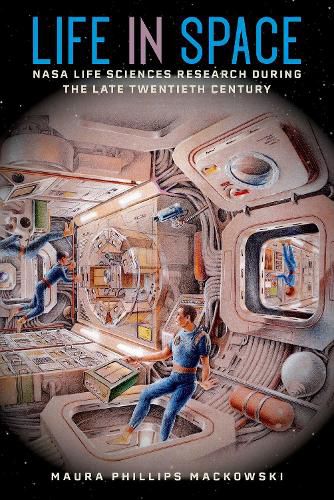Readings Newsletter
Become a Readings Member to make your shopping experience even easier.
Sign in or sign up for free!
You’re not far away from qualifying for FREE standard shipping within Australia
You’ve qualified for FREE standard shipping within Australia
The cart is loading…






This title is printed to order. This book may have been self-published. If so, we cannot guarantee the quality of the content. In the main most books will have gone through the editing process however some may not. We therefore suggest that you be aware of this before ordering this book. If in doubt check either the author or publisher’s details as we are unable to accept any returns unless they are faulty. Please contact us if you have any questions.
Life in Space explores the many aspects and outcomes of NASA’s research in life sciences, a little-understood endeavor that has often been overlooked in histories of the space agency. Maura Mackowski details NASA’s work in this field from spectacular promises made during the Reagan era to the major new directions set by George W. Bush’s Vision for Space Exploration in the early twenty-first century.
At the first flight of NASA’s space shuttle in 1981, hopes ran high for the shuttle program to achieve its potential of regularly transporting humans, cargo, and scientific experiments between Earth and the International Space Station. Mackowski describes different programs, projects, and policies initiated across NASA centers and headquarters in the following decades to advance research into human safety and habitation, plant and animal biology, and commercial biomaterials. Mackowski illuminates these ventures in fascinating detail by drawing on rare archival sources, oral histories, interviews, and site visits.
While highlighting significant achievements and innovations such as space radiation research and the Neurolab Spacelab Mission, Mackowski reveals frustrations-lost opportunities, stagnation, and dead ends-stemming from frequent changes in presidential administrations and policies. For today’s dreams of lunar outposts or long-term spaceflight to become reality, Mackowski argues, a robust program in space life sciences is essential, and the history in this book offers lessons to help prevent leaving more expectations unfulfilled.
$9.00 standard shipping within Australia
FREE standard shipping within Australia for orders over $100.00
Express & International shipping calculated at checkout
This title is printed to order. This book may have been self-published. If so, we cannot guarantee the quality of the content. In the main most books will have gone through the editing process however some may not. We therefore suggest that you be aware of this before ordering this book. If in doubt check either the author or publisher’s details as we are unable to accept any returns unless they are faulty. Please contact us if you have any questions.
Life in Space explores the many aspects and outcomes of NASA’s research in life sciences, a little-understood endeavor that has often been overlooked in histories of the space agency. Maura Mackowski details NASA’s work in this field from spectacular promises made during the Reagan era to the major new directions set by George W. Bush’s Vision for Space Exploration in the early twenty-first century.
At the first flight of NASA’s space shuttle in 1981, hopes ran high for the shuttle program to achieve its potential of regularly transporting humans, cargo, and scientific experiments between Earth and the International Space Station. Mackowski describes different programs, projects, and policies initiated across NASA centers and headquarters in the following decades to advance research into human safety and habitation, plant and animal biology, and commercial biomaterials. Mackowski illuminates these ventures in fascinating detail by drawing on rare archival sources, oral histories, interviews, and site visits.
While highlighting significant achievements and innovations such as space radiation research and the Neurolab Spacelab Mission, Mackowski reveals frustrations-lost opportunities, stagnation, and dead ends-stemming from frequent changes in presidential administrations and policies. For today’s dreams of lunar outposts or long-term spaceflight to become reality, Mackowski argues, a robust program in space life sciences is essential, and the history in this book offers lessons to help prevent leaving more expectations unfulfilled.